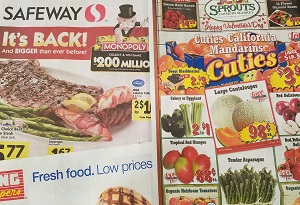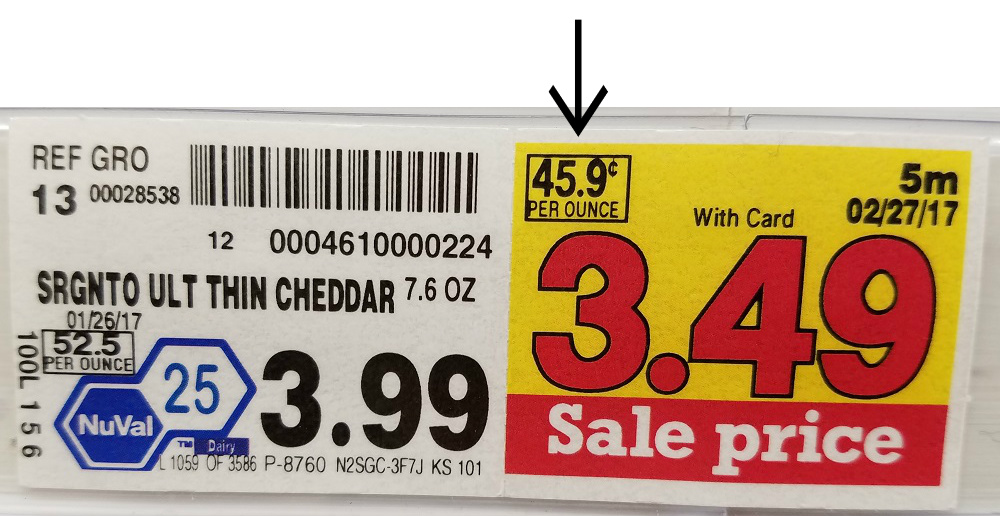
According to the USDA, Americans spent $1.46 trillion on food and beverages at grocery stores and other retail outlets in 2014 alone. That amount is expected to be even higher in 2017, due to livestock diseases, major weather events, and shocks to global food markets. Price inflation for food is outpacing every consumer spending category, with the exception of medical care and housing.
While we can’t do much to control food prices, there are many things we do to sabotage our own food budgets, including dropping $200 at the grocery store, then buying a pizza on the way home.
This post may contain affiliate links. See my disclosure policy for more details.
Food Budget Killers
Using coupons. Yep, I said that. Using coupons can be a money waster. Especially when you take into account that most coupons are for highly processed, overpriced foods. If the product is something you would never buy in the first place, you’d save more money by not buying it at all.
Following recipes exactly. You want to try out a new recipe you found scrolling through Pinterest. It calls for buttermilk, but you don’t have any. So you rush out to the store, buy a quart, use a cup, and the rest goes to waste. Sound familiar? Instead of throwing away money on stuff you won’t use, look for ways to substitute using items you have. Google is a great resource. There are endless articles on ingredient substitutions for everything from poultry seasoning to buttermilk. What’s Cooking America also has a handy chart on their site. (Tip: for each cup of buttermilk you need, substitute 1 tablespoon of white vinegar or lemon juice plus enough milk to measure 1 cup.)
Wasting food. FeedingAmerica.org estimates 70 billion pounds of food gets wasted in America each year. That translates to up to 40% of food grown, processed, and transported in the U.S. never being consumed. Sure, not all of that reaches our refrigerators or pantries, but it’s worth taking a hard look at our own habits to see where we can make a difference. Don’t buy perishables in bulk, freeze what you can, get creative with leftovers, and “shop” in your pantry instead of hitting the store. “Just Eat It: A Food Waste Story” is a great movie that is available for Free on Amazon Prime Video.
Assuming the sell by date is the “eat by” date. There are three buckets dates on food fall into: “Sell By”, “Use By”, and “Best if Used By”. Don’t buy food from a store past the sell by date. However, food in your fridge or pantry can still be edible days, or even weeks, after the sell by date, depending on what it is. Use by is the last day that a food manufacturer will guarantee a product’s quality, but it doesn’t mean the food is unsafe after this date. Best if used by indicates the flavor or quality of a food may not be as good after this day, but it may still be fine to eat. The USDA says, “Food products are safe to consume past the date on the label, and regardless of the date, consumers should evaluate the quality of the food product prior to its consumption.” (Tip: It never hurts to do the sniff test, especially with meat and dairy products.)
Tossing food before it is spoiled. Bananas a little too brown? Make banana bread. Bread a little too crusty? Make bread pudding or croutons. Even stale cereal, such as corn flakes or Chex, can be crushed up and used as breading for fried chicken.
Not using the store’s loyalty rewards card. All those discounted price tags you see on the shelves are probably only offered if you have a shopper loyalty card. Don’t have a card or forget to swipe yours? Be prepared to pay full price.
Assuming you have to buy 2 when something is priced 2 for $5. This is a very common upsell tactic to get people to spend more money. Oftentimes, the sale price is the same whether you buy 1 or 2. Check your store’s policy.
Buying produce that is not in season. When produce is in season, it’s cheaper, fresher, tastes better, and has more nutrients. It’s also more likely to be locally grown, making it a better choice from an environmental standpoint.
Buying meat that is not on sale. Grocery stores regularly have specials on different cuts of meat. Plan your weekly menus around what is on sale. Stock up and freeze meats your family consumes regularly when the price is right.
Eating meat with every meal. Vegetable based proteins are more affordable, healthier, and take less of a toll on our environment. They are also easier on your bank account. According to Time.com, vegetarians can save at least $750 more per year than meat-eaters. Cookie + Kate is one of my favorite vegetarian food blogs. You’ll find a ton of great recipes there!

Not knowing the average price of items you buy most. Just because a store says an item is on sale doesn’t mean it is the best price. Knowing how much things cost on average will help you determine which sales are good and which are all hype.
Being brand loyal to a fault. Whether it’s the store or the products you buy, keep an open mind and try new things. In the process of saving money, you could also discover a new favorite.
Buying dairy products that are displayed in the front row. Grocery stores place the items expiring soonest in the front. Reach around to the back and grab the milk that is fresher and will last in your fridge longer.
Buying pre-sliced fruits and veggies. A ready-to-go fruit or veggie tray can run $10 or more. Take a few minutes to wash and slice the stuff yourself and you will pay a fraction of that.
Paying more than $2 for a box of cereal. Here’s where it makes sense to clip coupons. Stacking a manufacturer’s coupon on top of a cereal that is on sale will almost always get you under the $2 mark.
Ignoring the store’s salad bar. If you’re making a Greek Salad and only need a few kalamata olives, don’t waste money on a whole jar. It’s cheaper to buy the few you need from the store’s salad bar.
Avoiding the bakery’s “day old” rack. You can save 50% or more on rolls, baguettes, french bread, and other bakery items by scooping them off the day old rack. Just be sure to give them a little squeeze first to make sure they are still fresh enough and use or freeze them the day you buy. Shop early for the best selection.
Grabbing a huge cart. You are more likely to fill a big cart with items you don’t really need. Keep impulse buys to a minimum by using the smallest cart to get the job done.
Not watching prices at the register and checking your receipt. ABC News reported supermarket scanner errors cost consumers up to $2.5 billion per year! The most common problems are sales not being programmed into the register and stores that charge tax on non-taxable items.
Shopping without a plan. Having a list isn’t enough. Know what you are going to make with those items before you put them in your cart.
Spending too much time in the store. The longer you’re there, the more you’ll buy. Try to get in and out in as little time as possible. Take your list (organized by department), a pen to cross things off as you grab them, and hit the ground running.
Taking kids with you. I know. This one isn’t always easy. When mine were little (I had 3 under 5 at one point), I would go grocery shopping when my husband got home from work. As they got older, I would go while they were at school. It’s easier to stay on budget when you don’t have little munchkins begging for stuff that isn’t on the list and you won’t have to offer up food bribes in exchange for them being good.
Bottom line. It’s your money. Be mindful of where you are spending it and do all you can to keep more of it in your wallet!
Sign up for my email newsletter to get tips like these delivered to your inbox!
14

 FiltersFast Coupon : $20 off $99 or more on All FiltersFast Brand Filters code BARGAIN20
FiltersFast Coupon : $20 off $99 or more on All FiltersFast Brand Filters code BARGAIN20 Retro Stage Coupon : 10% off $79+ order code RSBUD10
Retro Stage Coupon : 10% off $79+ order code RSBUD10 Glow Recipe Coupon : 15% off Sitewide code MBBGLOW15
Glow Recipe Coupon : 15% off Sitewide code MBBGLOW15